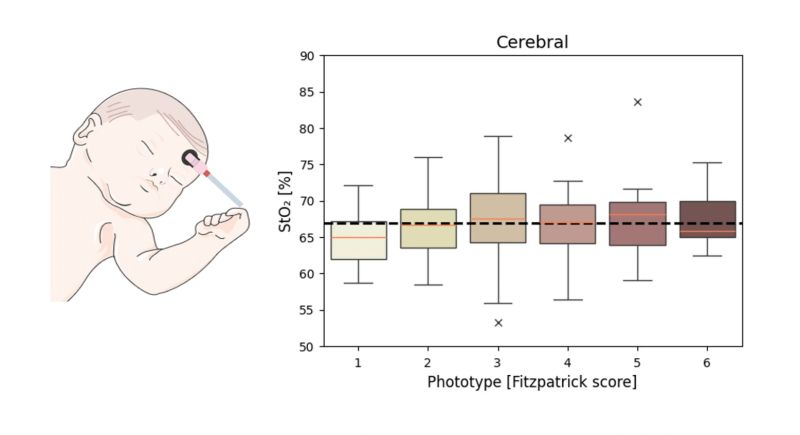New Study Reveals Negligible Impact of Skin Pigmentation on TD-NIRS Tissue Oximetry

We are pleased to share the pre-print of this novel study addressing skin pigmentation challenge in optical diagnostics.
Study Overview:
Objective: Investigate how skin pigmentation impacts TD NIRS performance.
Methods: InVivo measurements involved large pediatric cohort of healthy subjects (350+) for static measurements and a adult cohort for induced hemodynamic variations. Additionally, controlled experimental setups included using silicone and nigrosine phantoms to simulate different melanosome volume fractions.
Results: The findings reveal that skin pigmentation has a negligible impact on TD NIRS across various wavelengths and measurement conditions. This suggests that PIONIRS tissue oximeters can provide reliable and unbiased data, regardless of skin pigmentation.
Implications:
Clinical Relevance: These results support the robustness of TD NIRS in clinical settings, offering confidence in its application across diverse populations and extreeme hemodynamic scenarios (i.e. hyperoxia and hypoxia).
Future Directions: The study highlights the importance of ongoing research and standardization to further enhance the utility and accessibility of TD NIRS tissue oximeters.
Marking a significant step forward in ensuring that optical diagnostic techniques can be effectively utilized for all patients, promoting inclusivity and accuracy in medical assessments.
Read more here: https://www.pionirs.com/wp/#inclusivity
